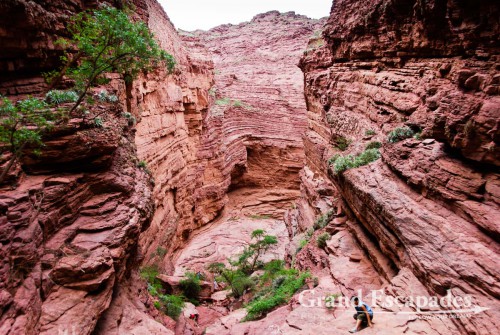
La Quebrada de Cafayate – A magic display of colours, dark red or pinkish hills and whitish cliffs with brown tops are often twisted into bizarre formations
Cafayate is a popular resort town thanks to its scenic surroundings and the pleasant climate during the summer months. The main attraction is Quebrada de Cafayate, a canyon cut in the arid zone by rivers descending down from the Andes. What make the canyon so spectacular are the many colours of the different sedimentary layers and the bizarre rock formations.
Not less visited are the many wineries in the area around Cafayate. Of course we tried the local wine, but did not do the obligatory tour to a Bodega. This will have to wait till we get to Mendoza. What we found rather striking is that all vineyards are fenced off with barbwire, without exception!
There are quite a few tourists in this region, mainly Argentinians and among them young backpackers are the vast majoirty. They can be seen everywhere, always in groups, equipped with a guitar and often waiting on the roadside trying to hitch a ride. The way they dress and behave reminded us a lot of films portraying young people in the 1960s. Generally hitching seems to be the preferred way of getting around here, for locals and tourists alike. Since most locals drive pickup trucks, they easily can accommodate the groups of young travellers and their gear.
Here the feeling that the trip itself is the experience quickly returned, just like it was when travelling through Peru and Bolivia. Every minute something new and exciting shows on the horizon. Very different to travelling in the south of the country where you cross hundreds of miles through Patagonia’s steppe!
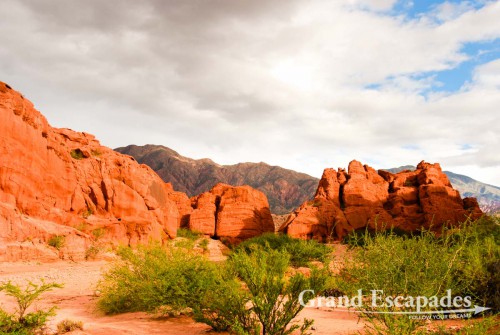
La Quebrada de Cafayate – A magic display of colours, dark red or pinkish hills and whitish cliffs with brown tops are often twisted into bizarre formations
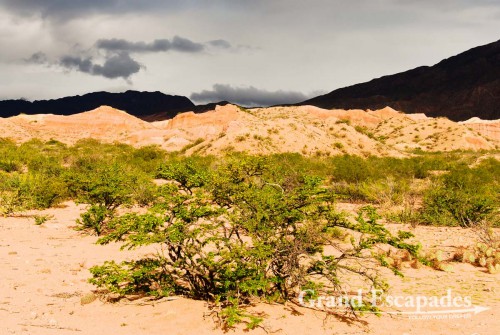
La Quebrada de Cafayate – A magic display of colours, dark red or pinkish hills and whitish cliffs with brown tops are often twisted into bizarre formations
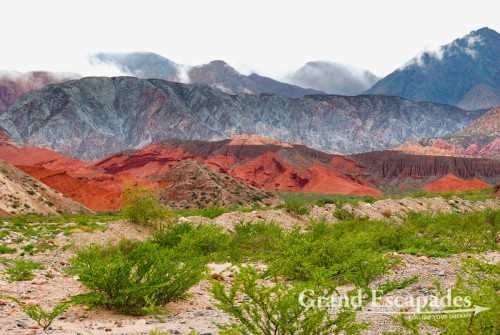
La Quebrada de Cafayate – A magic display of colours, dark red or pinkish hills and whitish cliffs with brown tops are often twisted into bizarre formations.
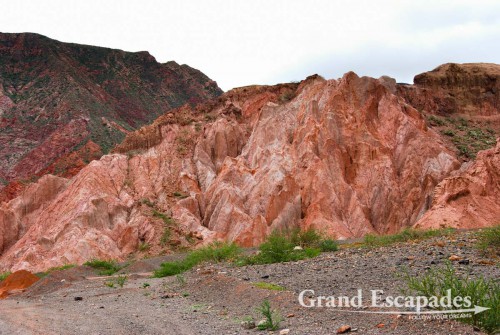
La Quebrada de Cafayate – A magic display of colours, dark red or pinkish hills and whitish cliffs with brown tops are often twisted into bizarre formations.
As soon as we arrived in the Northwest, we realized that it was also very different in other ways to the rest of Argentina. There are very few European tourists, prices often are a third of what you pay in southern Patagonia and a large part of the population is of Indigenous origin. This impression grew stronger the further north we travelled. The northwest is rural, very traditional and scenic. Travelling during the height of the rainy season, we soon got used to crossing flooded passages of country roads.
Also it is pleasantly quiet when strolling through a polychromic Quebrada or a winegrowing area. There is actually only one source of noise. This comes from the thousands of parrots that cut through the air in small groups like tiny jets or otherwise rest on trees or telephone cables causing quite a racket!
Angastaco is one of the few settlements in the Valle Calchaquies within the 190 kilometers between Cafayate and Cachi. We stopped there for lunch. There were only a few rather soulless roadside eateries so we followed a small sign saying “Comedor Rincon Florido”.
This was an amazing little place! The family of Senor Guiterrez has put a few tables in their patio where they offer tasty food to tourists dropping in. Looking into their guestbook, this probably happens every other day. The senor also showed us his collection of postcards and money, amongst them a 1.000.000 Pesos bill. The walls of the patio are decorated with old farming tools and gaucho gear. The family owns a vineyard, which is harvested is April and naturally we bought a few small bottle of our host’s produce. This was probably the most intriguing lunch we had in Latin America!
In the small church of Angastaco we saw for the first time features that we saw again and again in other churches in this region: roofs and confession boxes made of cactus wood and weavings of thick lama wool that line the white walls of the church.
The only other stop before we reached Cachi was in Molino to visit “Criadero Coquera”, where vicunas are raised. These cutest little animals were almost extinct and the population is now recovering due to such programme in Peru, Bolivia, Chile & Argentina. The shawls made of vicuna wool sell for 1.000 USD at the nearby artisan’s markets, including a certificate being able to take it out of the country: vicunas are taken very serious here.
After a comfortable night in one of the nicest hotels we stayed in South America, the Hotel Boutique El Corjito in Cachi, we were looking forward to driving one of the most scenic roads in the world. It winds its way through the steep, green-sloped and treeless mountains range between Cachí for Salta.

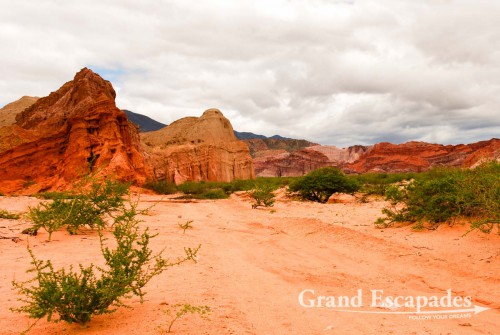
No comments yet.